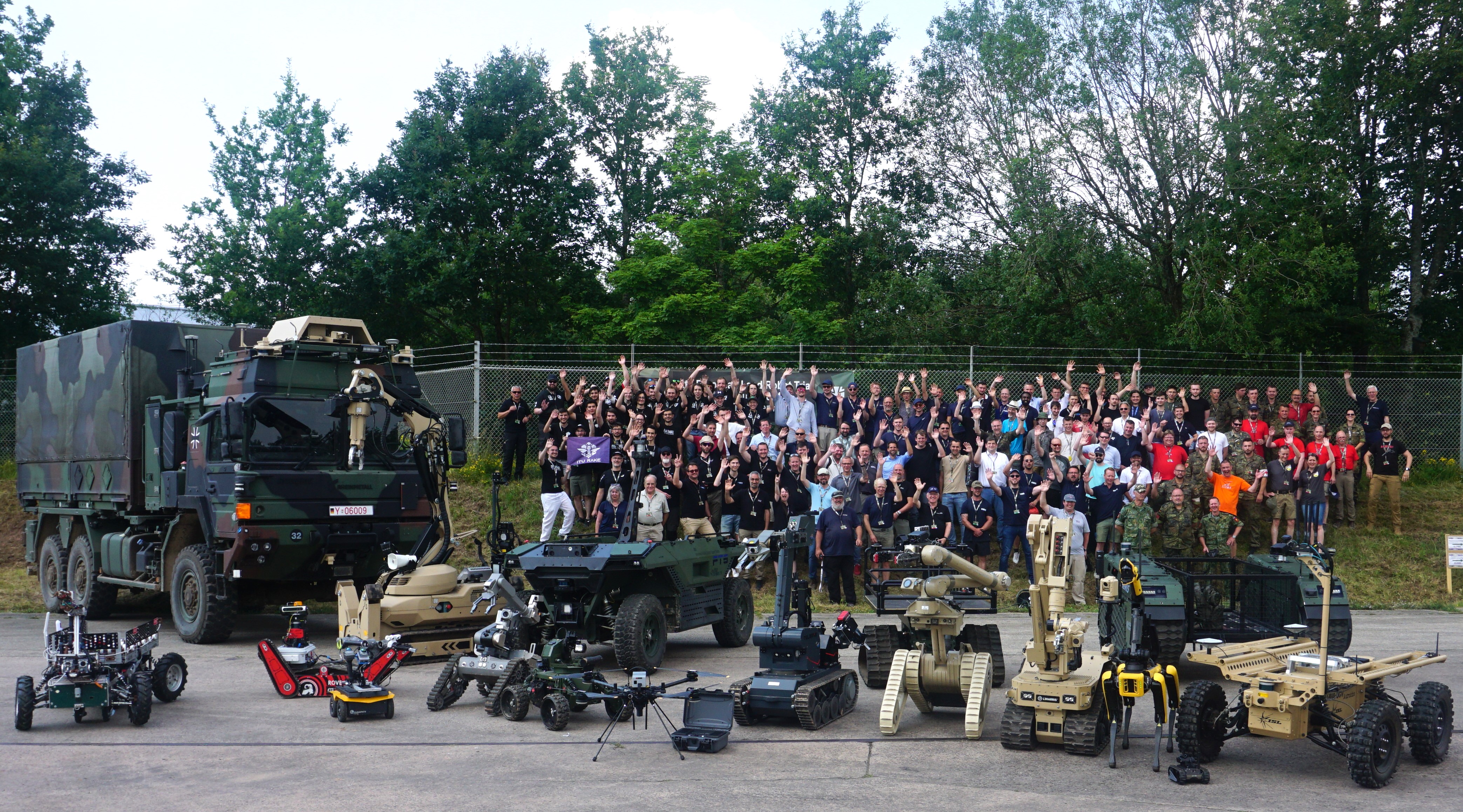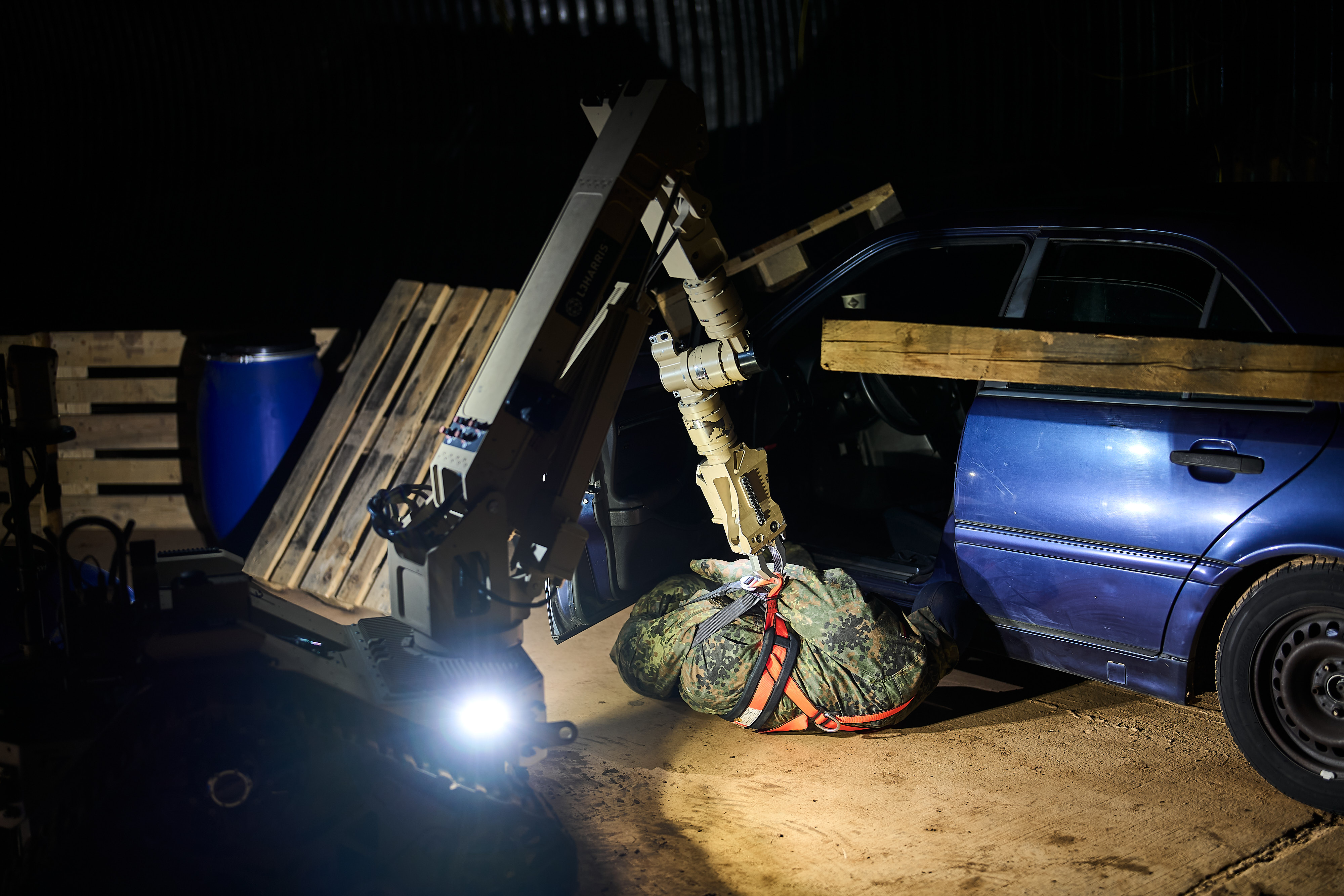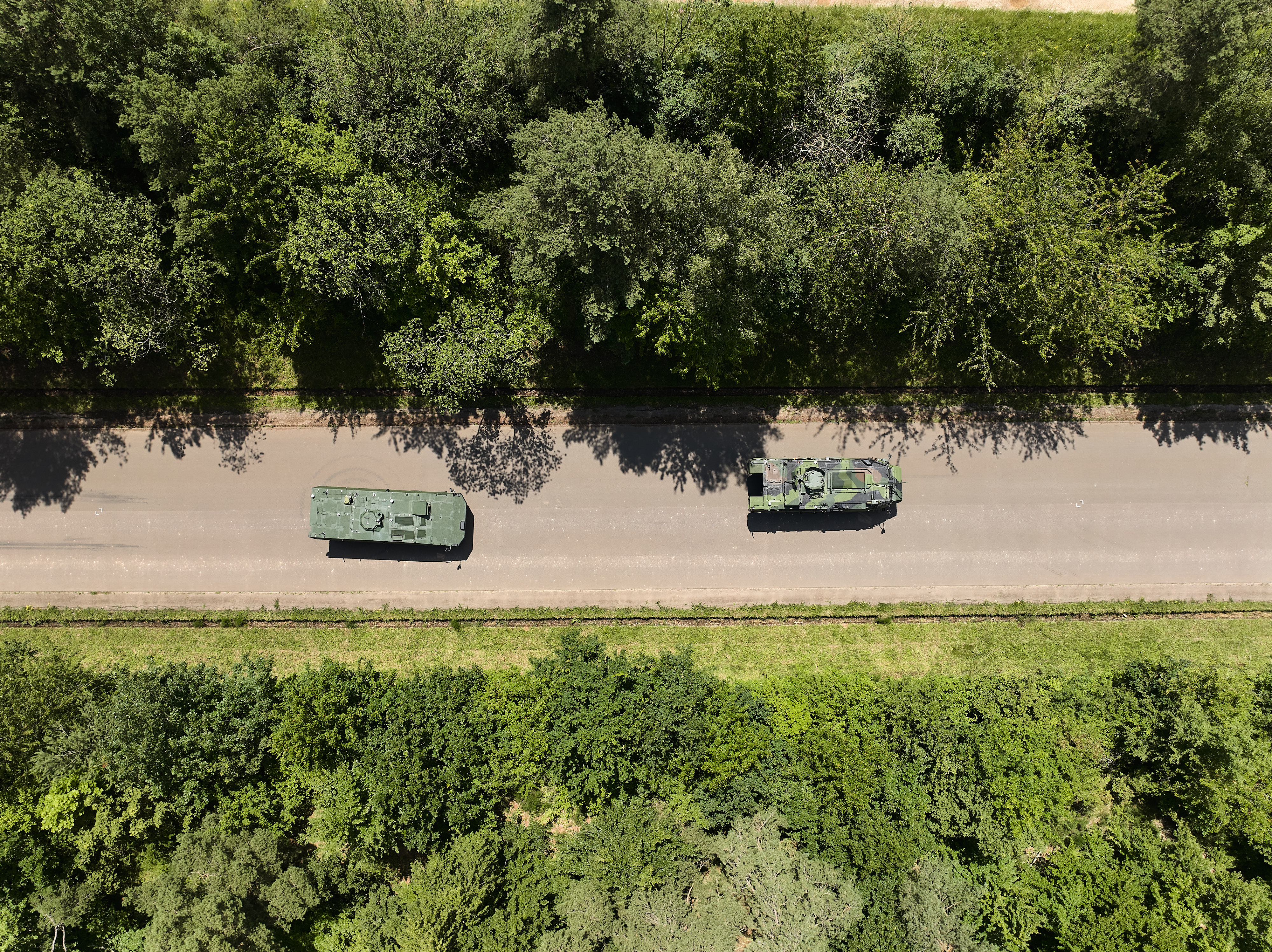Seventeen international teams deliver impressive performance in the European Land Robot Trial in Trier
It’s almost completely dark in the tunnel. The ground is uneven and slippery in places. A robot slowly makes its way toward a car, across pallets, past crates and tipped-over barrels. Its task: find and “rescue” two dummies and bring them outside. Some hundred meters or so away, Patrick Weiss is focused on remotely controlling the robot’s movements and its overlong gripper arm, while his colleagues Oliver Schulz and Patrik Bylin are glued to their monitors, watching the action unfold in the tunnel. The three of them, all from southern Germany, made up one of 17 teams from all over the world who entered the 12th European Land Robot Trial (ELROB), held on the grounds of Bundeswehr Technical Center for Land-Based Vehicle Systems, Engineer and General Field Equipment (WTD 41) in Trier in late June. Across five challenging disciplines with a military focus, the competitors tested their robotic systems to see how they would perform in real-world settings — and the results were mixed.



Ever since ELROB was first launched, in 2006, the team from the Fraunhofer Institute for Communication, Information Processing and Ergonomics FKIE in Wachtberg has been organizing the challenging test of performance every two years. This time around, the organizational preparations and development of the five scenarios — which, in addition to rescuing injured persons, include transport, convoying, reconnaissance and explosive ordnance (bomb) disposal — were conducted in close collaboration with the German Army Concepts and Capabilities Development Centre.
Testing robotic systems under real-world conditions
“Thanks to the direct involvement of the Bundeswehr, we were able to make this year’s scenarios even more realistic,” explains Dr. Frank E. Schneider, deputy head of the FKIE Cognitive Mobile Systems research department and founder of ELROB. With an eye to the accelerating pace of AI development, he says it is now more important than ever to test robotic systems under real-world conditions. “And this lets teams dial in their responses to the targets set by procurement.”
The Director-General of the Federal Office of Bundeswehr Equipment, Information Technology and In-Service Support (BAAINBw), Annette Lehnigk-Emden, attended the event in Trier in person to form an impression of the teams’ performance. “Researching technologies is one thing, but getting them to the point of readiness for application is quite another,” Lehnigk-Emden noted. She had some parting words of advice for organizers and teams: “Show us what’s feasible right now. But also show us where the limits of feasibility lie right now.”
Maik Kammermann, who also attended in place of ELROB 2024 sponsor Alexander Schott, a section head and the Director of Research and Innovation within the German Federal Ministry of Defence (BMVg), added: “Uncrewed system technology is strategically important to us.” Kammermann continued, explaining that while the current focus in procurement of uncrewed land systems is on their availability on the market, the future must also be kept in sight: The projects currently emerging from research, he noted, are the products of tomorrow and later.
Improvised workshop between water pallets and field kitchen
Austria, Switzerland, Finland, Turkey, Poland, the U.S., even Canada: Universities, small companies, and major industrial players had all sent teams to Trier, transforming the WTD 41 grounds into an international tent city for five days. Between an improvised workshop, pallets of water, and a field kitchen, the teams prepared for their events, fine-tuning and adjusting their systems right up to the last minute. In most cases, they were successful. But not always.
The twelve-person Capra ÉTS team traveled to Germany from Canada specifically for ELROB. The students had originally planned to test their newly developed “Rove” robot in three disciplines. But owing to technical difficulties, they only managed to enter in one scenario — and only to participate for a short time. “We’re still proud,” said team member Amber Louie. “Our goal was to get the robot up and running, and we did that.”
Highly motivated teams, family-like atmosphere
Steadily rising participation figures, highly motivated teams, a family-like atmosphere — Schneider says all those are features of ELROB. “In addition, the working relationship with the organizers on site went really well, and it was fun, too.” As for the teams’ performance, which was evaluated by a distinguished jury of specialists headed by American robotics expert Prof. Henrik I. Christensen, Schneider says the picture there is more mixed. In the “mule” scenario, for example, teams were assigned to automatically move a vehicle back and forth between multiple points as fast as possible following a training phase. “The challenges were much more significant than last year,” Schneider says. “Advances in the systems were modest, but even so, some of the teams showed promising approaches.”
In the “convoy” scenario, consisting of a crewed lead vehicle and one or more automated uncrewed following vehicles, this year’s challenge set the bar extremely high, as the ELROB head admits. But one team did show that the complex challenges could be overcome. Schneider confirms that participants put in “a solid performance via remote control” in both the “reconnaissance” and “CasEvac” — search and rescue of injured persons — scenarios. He comments: “We’ll need to put more attention toward intelligent assistance systems over the next few years.”
ELROB 2026 in Switzerland
Captain Göran Bölke says the collaboration among the scientific and research sectors, clients and users — the military — is what makes ELROB so special. Bölke, who serves as an operations officer within the Testing & Experimentation staff unit, also got a look at the current status of the systems on display in the role of jury member. “ELROB gives me the opportunity to learn more and gather knowledge about what kinds of solutions are out there right now, and in practical use, unlike at a trade show,” he says.
Patrick Weiss, Oliver Schulz and Patrik Bylin also have a positive takeaway. Their robot’s mission in the tunnel ended up lasting 22 minutes. It brought both dummies outside without any significant injuries. “Very nice run,” the jury said. But it ultimately wasn’t enough for the team to take the winning trophy. What do they say in closing? “We’ll be back next time.” That will be in 2026, when the 13th European Land Robot Trial will be held in Switzerland.
